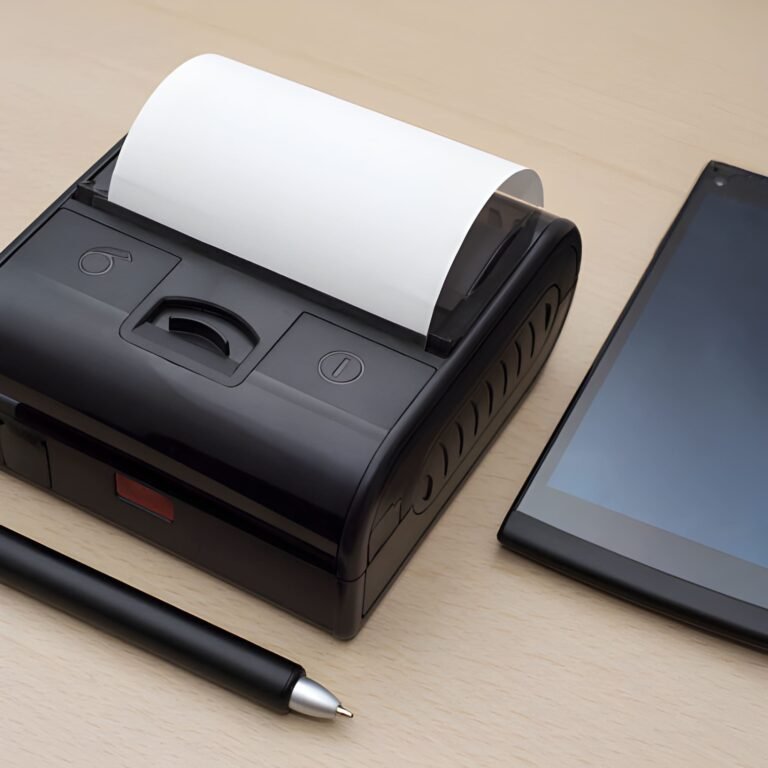Thermal Printer Rolls
Thermal printer rolls are a staple for businesses worldwide, thanks to their efficiency and cost-effectiveness. They are commonly used in industries like retail, hospitality, and healthcare for printing receipts, labels, and tickets. Understanding the factors that influence the lifespan of thermal printer rolls can help businesses save money, reduce waste, and maintain smooth operations. In this article, we’ll explore the key aspects of thermal printer roll durability and provide practical tips to maximize their lifespan.
Factors Influencing the Lifespan of Thermal Printer Rolls
Quality of the Paper
The quality of the thermal paper plays a pivotal role in its lifespan. High-quality rolls typically feature a durable thermal coating that ensures clear and long-lasting prints. Substandard rolls may fade quickly or tear during use, leading to inefficiency.
Storage Conditions
Improper storage can significantly impact the longevity of thermal rolls. Exposure to excessive heat, humidity, or direct sunlight can cause the thermal coating to deteriorate, rendering the roll unusable. Ideal storage involves keeping the rolls in a cool, dry place, away from any heat sources.
Printer Settings
The settings on your thermal printer can also influence the durability of the rolls. Incorrect temperature or print density settings may consume more paper than necessary or damage the thermal coating. Adjusting the settings to match the roll’s specifications can ensure optimal performance.
Frequency of Use
How frequently the thermal printer rolls are used also affects their lifespan. Businesses with high printing demands will naturally consume rolls faster, but maintaining a balance between use and rest can prevent premature wear.
Choose Premium Quality Rolls
Investing in premium-quality thermal printer rolls from trusted suppliers, such as The Paper Roll, can guarantee better performance and durability. High-quality rolls are designed to handle consistent printing demands while maintaining print clarity over time.
Store Rolls Properly
Proper storage is essential to preserving the thermal coating. Follow these guidelines for optimal storage:
- Keep rolls in a temperature-controlled environment, ideally between 15°C and 25°C.
- Avoid direct exposure to sunlight or fluorescent lighting.
- Store rolls in their original packaging to prevent dust accumulation.
Regular Maintenance of Printers
Clean your thermal printer regularly to remove dust and debris that can accumulate on the print head and rollers. Proper maintenance ensures that the printer operates efficiently and reduces the risk of damaging the thermal rolls.
Calibrate Printer Settings
Match your printer settings to the specifications of the thermal rolls. Adjusting the print density and speed can prevent overuse of the paper and ensure the thermal coating remains intact.

Using Low-Quality Rolls
Low-cost rolls may seem economical at first, but their inferior quality can lead to frequent replacements and increased operational costs. Always prioritize quality over cost to ensure long-term savings.
Neglecting Printer Maintenance
Failing to clean and maintain the printer can lead to uneven printing, smudges, and damage to the rolls. Regular check-ups can prolong the life of both the printer and the rolls.
Environmental Considerations
Extending the lifespan of thermal printer rolls not only benefits your business but also contributes to sustainability. By minimizing waste and maximizing the efficiency of each roll, you can reduce your carbon footprint. Opting for eco-friendly thermal rolls, which are recyclable and BPA-free, is another step toward greener operations.
How The Paper Roll Ensures Quality
At The Paper Roll, we understand the importance of durability and quality in thermal printer rolls. Our products are crafted to meet the highest industry standards, ensuring reliable performance and long-lasting use. With proper care and handling, our thermal rolls can help businesses optimize their printing processes and reduce costs.
Practical Tips for Daily Use
- Rotate Stock
Use older rolls first to prevent them from sitting too long in storage, which could degrade their quality. - Avoid Overfilling the Printer
Overloading the printer with a roll can cause jamming and damage the paper. Always load the roll according to the printer’s guidelines. - Monitor Printer Settings
Check the printer’s settings regularly to ensure they match the specifications of the thermal roll in use. - Train Staff
Educate your team on proper handling and storage techniques for thermal rolls to maintain quality and efficiency.
Why Lifespan Matters
Understanding the lifespan of thermal printer rolls and how to maximize it can lead to significant cost savings and operational efficiency. By taking simple steps to protect and optimize your rolls, your business can maintain consistent output while reducing waste and downtime.

Final Thoughts
Thermal printer rolls are an indispensable tool for many industries. With the right approach, their lifespan can be significantly extended, benefiting both your business operations and the environment. By choosing premium products like those offered by The Paper Roll, you can ensure superior quality, reliability, and performance.









